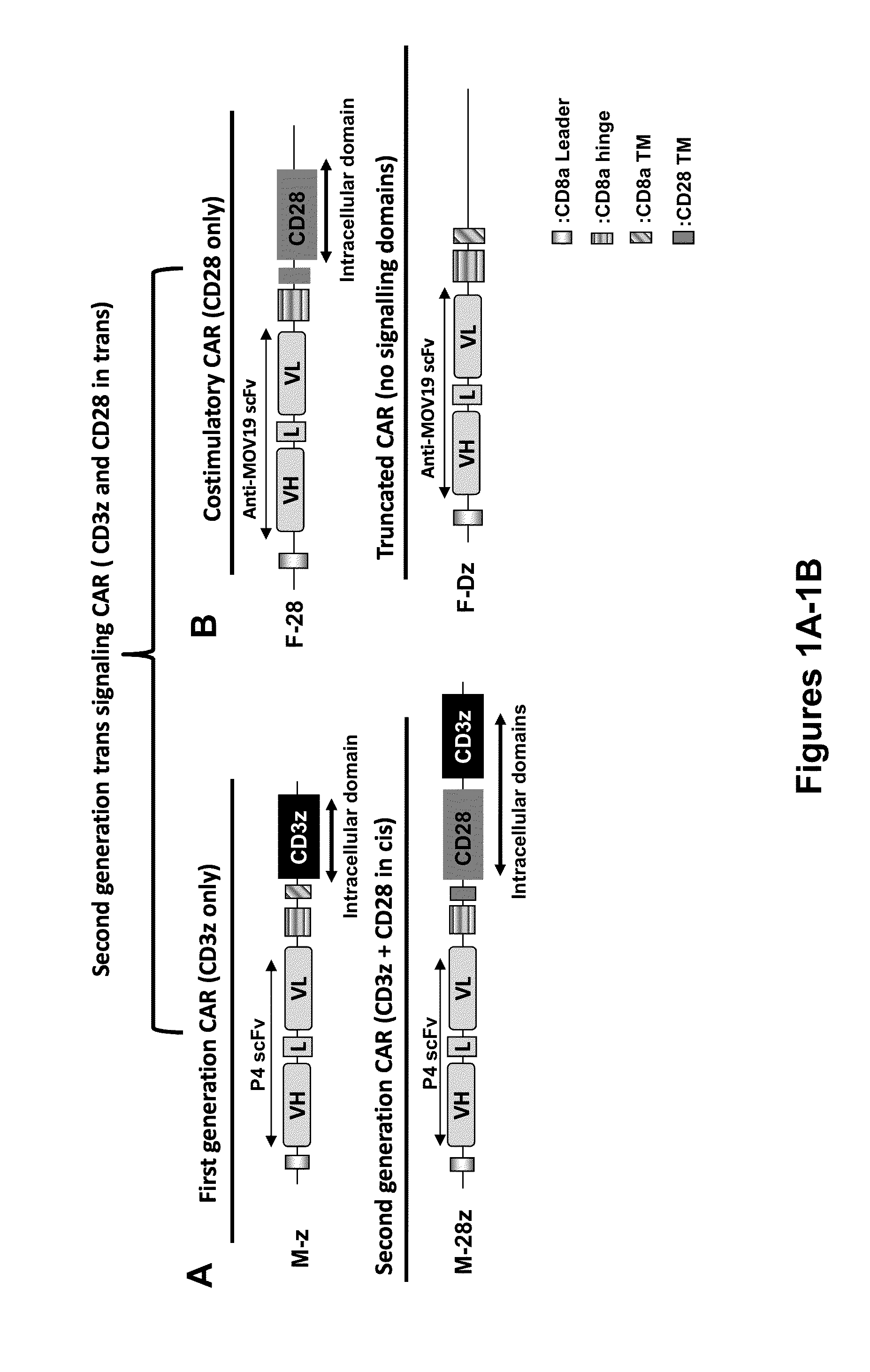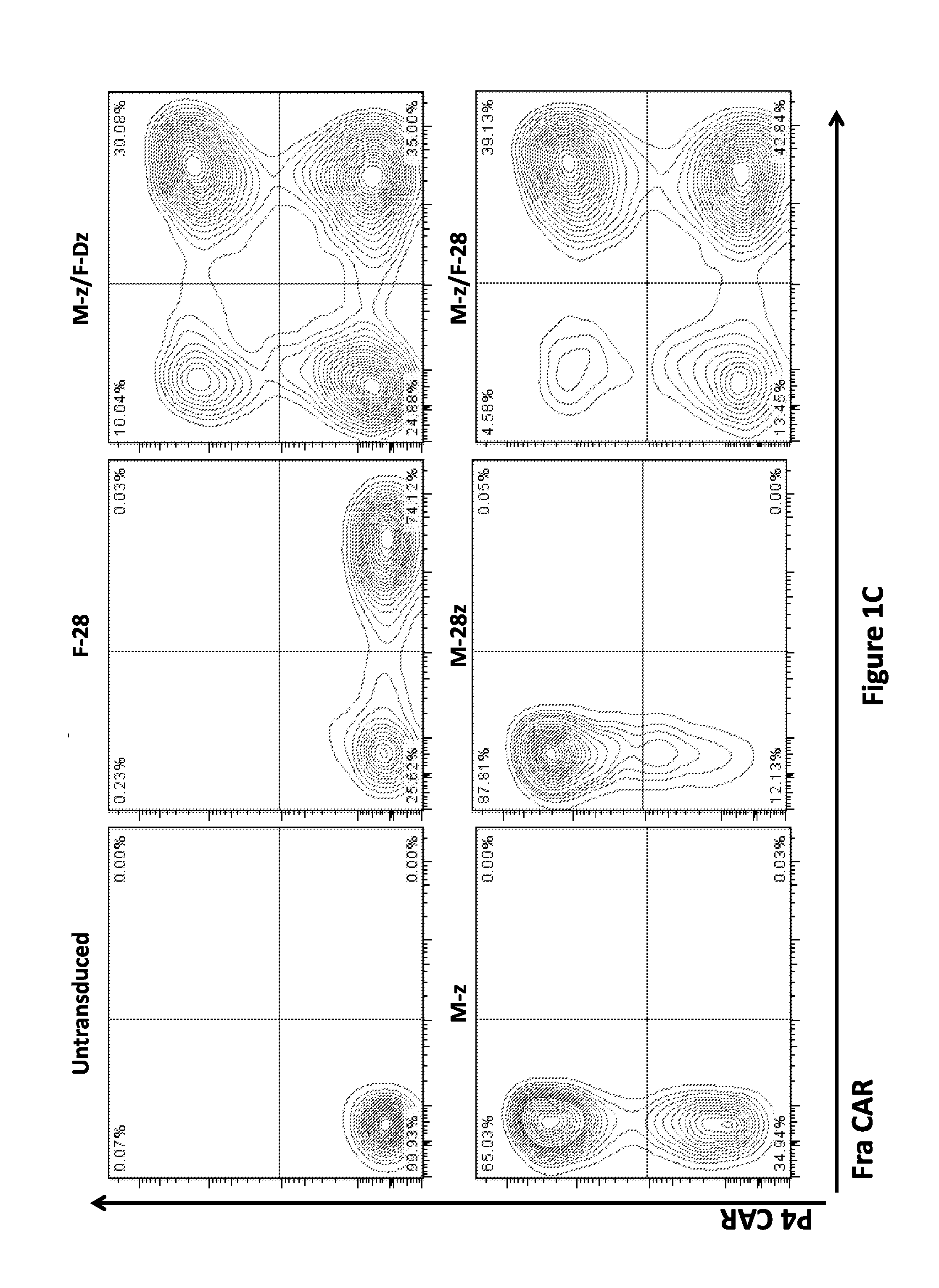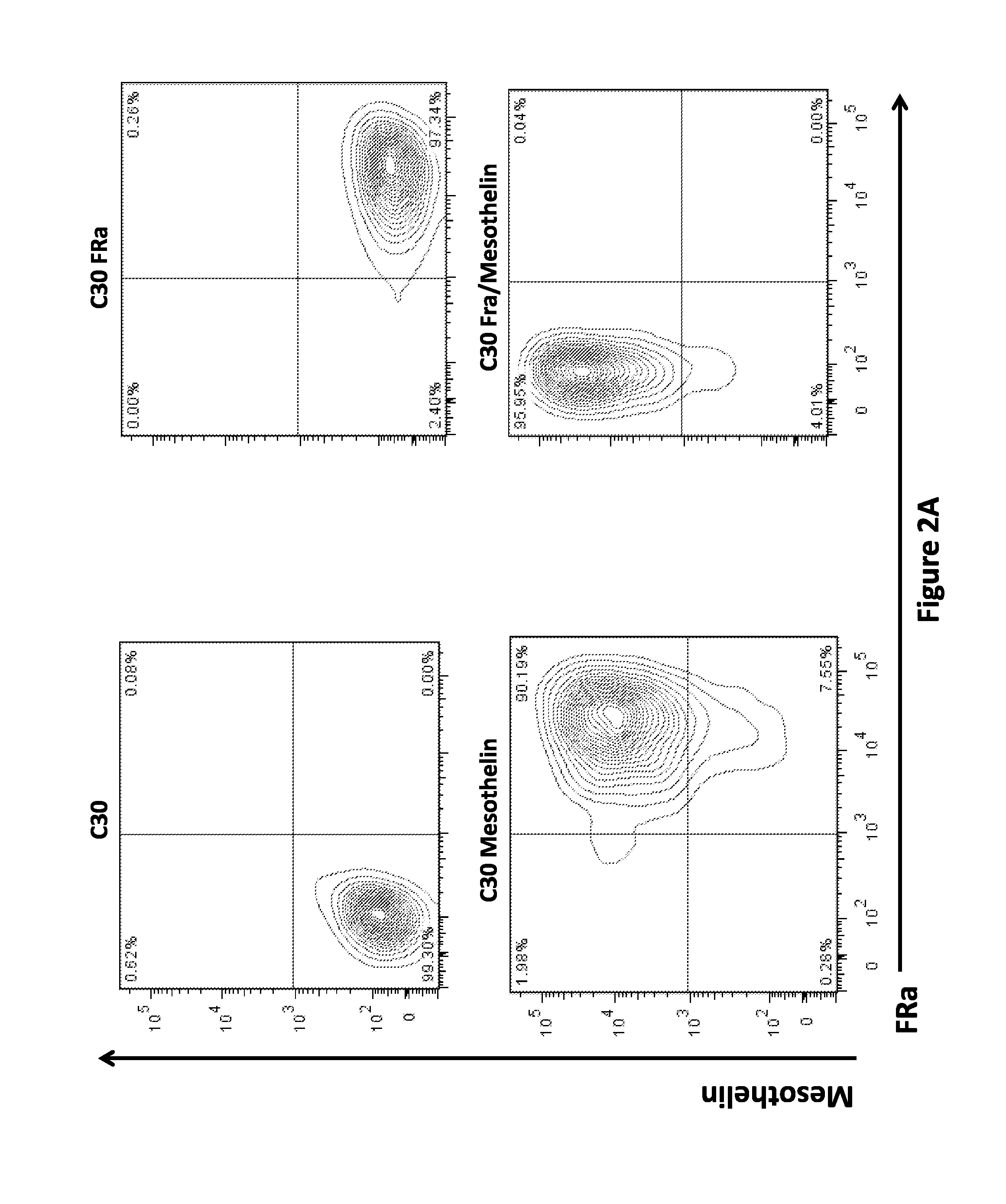Use of a Trans-Signaling Approach in Chimeric Antigen Receptors
a technology transsignaling technology, which is applied in the direction of peptides, drug compositions, fused cells, etc., can solve the problems of hampered efficacy, expansion and persistence of chimeric antigen receptor, etc., and achieve the effect of heightened tumor specificity
- Summary
- Abstract
- Description
- Claims
- Application Information
AI Technical Summary
Benefits of technology
Problems solved by technology
Method used
Image
Examples
experimental examples
[0204]The invention is further described in detail by reference to the following experimental examples. These examples are provided for purposes of illustration only, and are not intended to be limiting unless otherwise specified. Thus, the invention should in no way be construed as being limited to the following examples, but rather, should be construed to encompass any and all variations which become evident as a result of the teaching provided herein.
[0205]Without further description, it is believed that one of ordinary skill in the art can, using the preceding description and the following illustrative examples, make and utilize the compounds of the present invention and practice the claimed methods. The following working examples therefore, specifically point out the preferred embodiments of the present invention, and are not to be construed as limiting in any way the remainder of the disclosure.
example 1
Chimeric Antigen Receptor T Cells with Dissociated Signaling Domains Exhibit Focused Anti-Tumor Activity In Vivo
[0206]By way of example, a trans-signaling CAR strategy was utilized to specify T cells for robust effector function that is selective for tumor but not normal tissue, whereby the T cell activation signal 1 (e.g., CD3z module) is physically dissociated from the costimulatory signal 2 (e.g., CD28 module) in two CARs of differing antigen specificity; one against mesothelin and one against □-folate receptor (aFR).
[0207]For example, human T cells were genetically modified to co-express signal 1 (Anti-Meso scFv-CD3z) and signal 2 (Anti-aFR scFv-CD28) CARs in trans. Trans-signaling CART cells showed weak cytokine secretion against tumor targets expressing only one tumor associated antigen (TAA), similar to first generation CART cells bearing CD3ζ only, but demonstrated enhanced cytokine secretion and resistance to antigen induced cell death (AICD) upon encountering natural or en...
example 2
CAR Constructs
[0240]
P4-z (amino acid sequence)(SEQ ID NO: 3)MALPVTALLLPLALLLHAARPGSQVQLQQSGPGLVTPSQTLSLTCAISGDSVSSNSATWNWIRQSPSRGLEWLGRTYYRSKWYNDYAVSVKSRMSINPDTSKNQFSLQLNSVTPEDTAVYYCARGMMTYYYGMDVWGQGTTVTVSSGILGSGGGGSGGGGSGGGGSQPVLTQSSSLSASPGASASLTCTLRSGINVGPYRIYWYQQKPGSPPQYLLNYKSDSDKQQGSGVPSRFSGSKDASANAGVLLISGLRSEDEADYYCMIWHSSAAVFGGGTQLTVLSASTTTPAPRPPTPAPTIASRPLSLRPEACRPAAGGAVHTRGLDFACDIYIWAPLAGTCGVLLLSLVITLYCRVKFSRSADAPAYQQGQNQLYNELNLGRREEYDVLDKRRGRDPEMGGKPRRKNPQEGLYNELQKDKMAEAYSEIGMKGERRRGKGHDGLYQGLSTATKDTYDALHMQALPPRP4-z (nucleotide sequence)(SEQ ID NO: 4)ATGGCCTTAC CAGTGACCGC CTTGCTCCTG CCGCTGGCCTTGCTGCTCCA CGCCGCCAGG CCGGGATCTC AGGTACAGCTGCAGCAGTCA GGTCCAGGAC TCGTGACGCC CTCGCAGACCCTCTCACTCA CCTGTGCCAT CTCCGGGGAC AGTGTCTCTAGCAACAGTGC TACTTGGAAC TGGATCAGGC AGTCCCCATCGAGAGGCCTT GAGTGGCTGG GAAGGACATA CTACAGGTCCAAGTGGTATA ACGACTATGC AGTATCTGTG AAAAGTCGAATGAGCATCAA CCCAGACACA TCCAAGAACC AGTTCTCCCTGCAGCTGAAC TCTGTGACTC CCGAGGACAC GGCTGTGTATTACTGTGCAA GAGGAATGAT GACTTACTAT TACGGTATGGAC...
PUM
 Login to View More
Login to View More Abstract
Description
Claims
Application Information
 Login to View More
Login to View More - R&D
- Intellectual Property
- Life Sciences
- Materials
- Tech Scout
- Unparalleled Data Quality
- Higher Quality Content
- 60% Fewer Hallucinations
Browse by: Latest US Patents, China's latest patents, Technical Efficacy Thesaurus, Application Domain, Technology Topic, Popular Technical Reports.
© 2025 PatSnap. All rights reserved.Legal|Privacy policy|Modern Slavery Act Transparency Statement|Sitemap|About US| Contact US: help@patsnap.com



